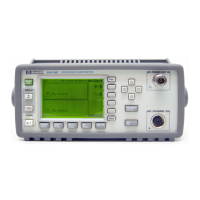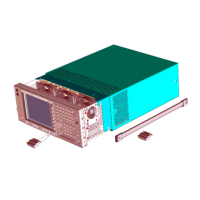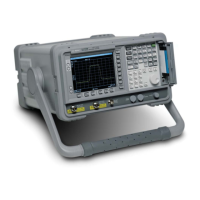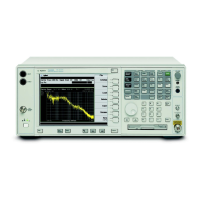Power Meter Operation
Setting Averaging
Agilent E4419B User’s Guide 2-41
Setting Averaging
The power meter uses a digital filter to average power readings. The
number of readings averaged can range from 1 to 1024. This filter is used
to reduce noise, obtain the desired resolution and to reduce the jitter in
the measurement results. Increasing the value of the filter length reduces
measurement noise. However, the time to take the measurement is
increased. You can select the filter length or you can set the power meter
to auto filter mode. The default is “AUTO”.
When the auto filter mode is enabled, the power meter automatically sets
the number of readings averaged together to satisfy the filtering
requirements for most power measurements. The number of readings
averaged together depends on the resolution and the power level currently
being measured. Figure 2-10 lists the number of readings averaged for
each range and resolution when the power meter is in auto filter mode and
is set to normal speed mode (refer to the Agilent E4418B/E4419B
Programming Guide for details of the readings averaged in the other
speed modes).
Resolution is a window function and not a channel function. In the case
where a channel is set up in both the upper and lower window and the
resolution settings are different, the highest resolution setting is taken to
calculate the averaging number. For example, if the upper window has a
resolution setting of 2 and is measuring channel A - channel B and the
lower window has a resolution of 4 and is measuring channel A. In this
instance channel A averaging is calculated with a resolution of 4 and
channel B with a resolution of 2.
HP4402.book Page 41 Thursday, November 30, 2000 1:39 PM
